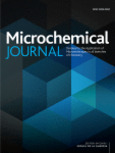New Paper in Microchemical Journal
Biocompatibility assessment of organic semiconductor pigments epindolidione and quinacridone
Authors: Sarka Hradilova, Tana Zavodna, Jan Belza, Mihai Irimia-Vladu, Niyazi Serdar Sariciftci, Cigdem Yumusak and Katerina Polakova.
Full-text: https://www.sciencedirect.com/science/article/pii/S0026265X2400852X
Abstract:

Organic colorants epindolidione (EPI) and quinacridone (QUI) are commercially available hydrogen-bonded semiconductor pigments. Despite their suitable properties for bioelectronic applications, their biocompatibility has not been thoroughly examined yet. In this study, thin EPI and QUI layers were applied on well plates by vacuum deposition technique followed by short and long-term in vitro biocompatibility study. In vitro testing represents a relatively fast and cheap approach, especially suitable for screening testing and prioritization of materials for further research. LIVE/DEAD assay, cell cycle analysis, adhesion and morphology of NIH 3T3 mouse fibroblasts have been investigated up to 7 days using flow cytometry and fluorescent optical microscopy. In summary, no significant differences were observed in viability, cell morphology, or attachment capabilities between control cells and cells grown on the EPI or QUI surfaces or cells cultivated in medium harvested from EPI- or QUI-coated wells. Our results suggest that both pigments are highly biocompatible. The absence of adverse biological effects of EPI and QUI together with their low cost and availability indicate their high application potential in next-generation bioelectronic devices.


